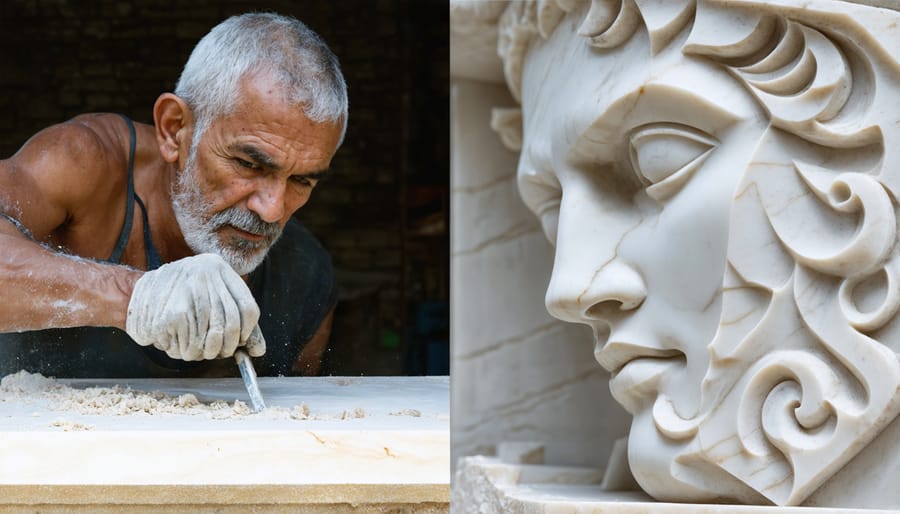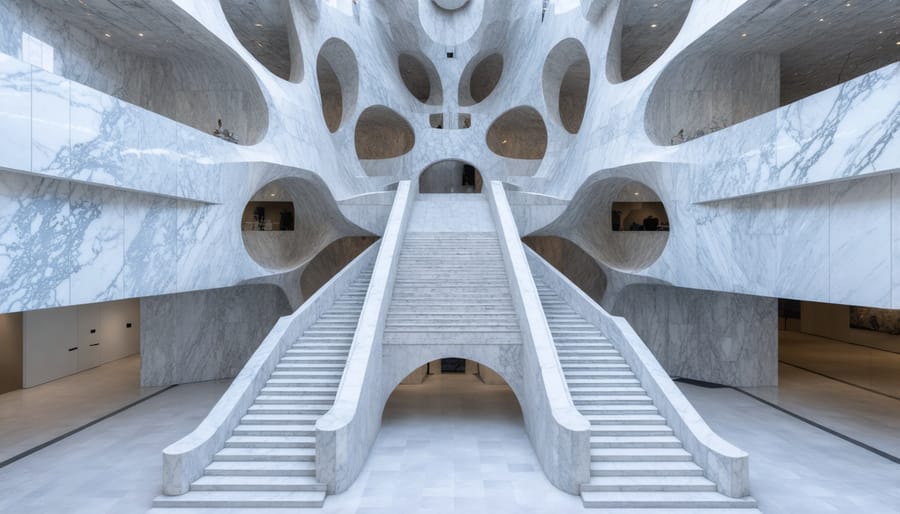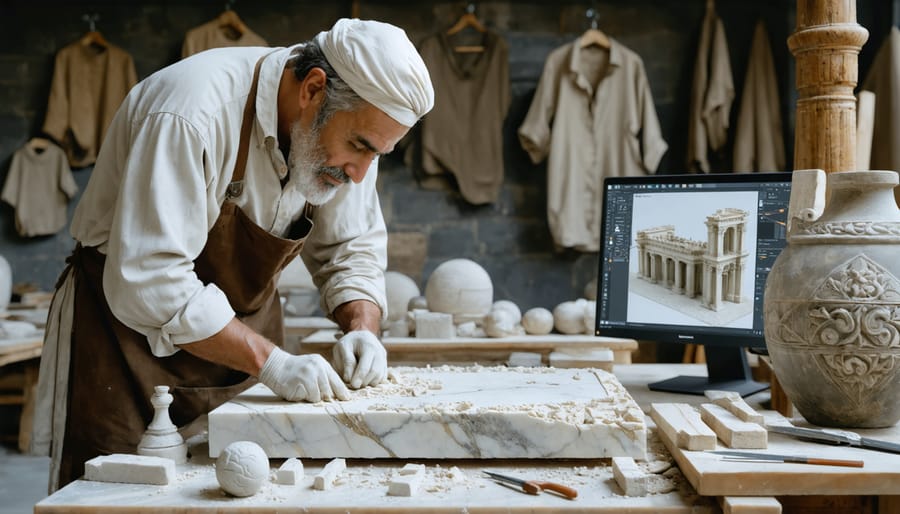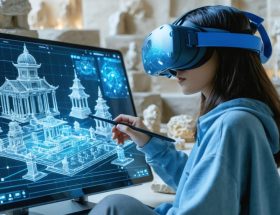In an era where innovation emerges at the intersection of disciplines, interdisciplinary collaborations have become the cornerstone of groundbreaking achievements. From architects partnering with geologists to understand stone properties, to designers working alongside structural engineers to push the boundaries of sustainable construction, these cross-functional partnerships drive creative problem-solving and technical advancement. The fusion of diverse expertise not only enriches project outcomes but also catalyzes innovation in ways that single-discipline approaches simply cannot match.
The most successful stone industry projects today demonstrate how materials scientists, craftsmen, and digital technology specialists combine their unique perspectives to revolutionize traditional practices. Whether developing more efficient extraction methods, creating novel finishing techniques, or pioneering adaptive reuse strategies, interdisciplinary teams consistently deliver solutions that honor both heritage and innovation. This collaborative approach has become increasingly vital as projects grow more complex and stakeholders demand solutions that are simultaneously beautiful, sustainable, and technically sound.
By breaking down traditional silos between specialties, professionals can tackle challenges with a more comprehensive toolkit, leading to outcomes that are greater than the sum of their parts. The future of natural stone applications lies not in isolated expertise, but in the powerful synthesis of knowledge across disciplines.
When Architecture Meets Artistry: The Power of Collaboration
Breaking Traditional Boundaries
The fusion of traditional stonework with modern disciplines is revolutionizing how we perceive and utilize natural stone. Today’s interdisciplinary collaborations are breaking down long-standing barriers between art, architecture, engineering, and digital technology, creating unprecedented possibilities in stone applications.
Digital fabrication technologies are now working hand-in-hand with traditional stone craftsmanship. 3D scanning and modeling allow artisans to visualize complex geometries before making a single cut, while robotic cutting tools execute intricate designs that were once impossible to achieve manually. This marriage of old and new has given birth to structures that honor traditional techniques while pushing the boundaries of what’s possible with stone.
Environmental scientists and geologists are collaborating with designers to develop sustainable stone applications that minimize waste and environmental impact. These partnerships have led to innovative recycling methods for stone offcuts and the development of more efficient quarrying techniques.
Artists are partnering with structural engineers to create bold installations that challenge our understanding of stone’s limitations. Through these collaborations, we’re seeing stone used in surprisingly dynamic ways – from kinetic sculptures to interactive public art pieces that respond to environmental conditions.
The integration of lighting designers and acoustical engineers has transformed stone from a purely structural material into an essential element of sensory experiences in architectural spaces. These collaborations are proving that stone can be both a historical building material and a medium for contemporary expression.
Technology and Tradition
The marriage of digital stone technology with traditional stone craftsmanship has ushered in a new era of possibilities in stone artistry. Modern tools like CNC machines, 3D scanning, and computer-aided design software now work alongside centuries-old hand-carving techniques, creating a powerful synergy that enhances both precision and artistic expression.
This technological integration hasn’t replaced traditional methods but rather augmented them. Artisans can now use digital modeling to preview complex designs before touching the stone, reducing material waste and enabling more ambitious projects. Meanwhile, the tactile knowledge passed down through generations ensures that the final touches maintain the warmth and character that only human hands can provide.
Notable examples include the restoration of historical monuments, where 3D scanning technology creates precise digital archives of ancient stonework, allowing craftspeople to replicate damaged sections with unprecedented accuracy. In contemporary architectural projects, digital tools enable the creation of intricate geometric patterns that would be nearly impossible to achieve by hand alone, while traditional finishing techniques ensure the stone maintains its natural beauty and texture.
This collaborative approach between old and new methodologies has not only improved efficiency and accuracy but has also opened up new creative possibilities, ensuring that stone art continues to evolve while preserving its rich heritage.

Successful Stone Art Collaboration Case Studies
The Modern Museum Project
The Modern Museum Project stands as a testament to the power of interdisciplinary collaboration in contemporary stone art. Located in the heart of Copenhagen, this groundbreaking installation brings together architects, sculptors, digital artists, and stonemasons in an unprecedented fusion of traditional craftsmanship and modern technology.
The project’s centerpiece features a sweeping 40-foot limestone wall that seamlessly integrates digital projections with hand-carved reliefs. Master stonemasons worked alongside digital artists to create precise mapping points within the stone surface, allowing projected imagery to interact with the physical textures and patterns of the carved stone.
What makes this collaboration particularly noteworthy is the innovative approach to material selection and preparation. Geologists and conservation specialists joined the creative team early in the process, ensuring the selected limestone would not only achieve the desired aesthetic impact but also maintain its integrity under various environmental conditions and technological applications.
The installation demonstrates how different expertise can enhance natural stone’s possibilities. Lighting designers contributed their knowledge of how various wavelengths interact with mineral compositions, while acoustic engineers helped optimize the space’s sound properties by strategically positioning and texturing stone surfaces.
The project’s success has inspired similar collaborations worldwide, establishing a new paradigm for museum installations that bridge traditional stone craftsmanship with contemporary artistic expression. It serves as a powerful example of how interdisciplinary partnerships can push the boundaries of what’s possible with natural stone, creating experiences that resonate with modern audiences while honoring ancient materials and techniques.

Urban Plaza Transformation
The transformation of Central Square Plaza demonstrates the powerful synergy between architectural vision and stone craftsmanship. This collaborative project, completed in 2022, revolutionized a formerly underutilized urban space into a vibrant community hub through the innovative use of natural stone elements.
Architects from Studio Urban Design partnered with master stone artisans from Heritage Stone Works to create a seamless blend of form and function. The plaza’s centerpiece features a striking granite amphitheater, where precisely cut stone blocks form elegant curved seating areas. Local limestone, carefully selected for its durability and aesthetic appeal, was incorporated into interactive water features and sculptural elements.
The project’s success hinged on early collaboration between disciplines. Architects provided detailed spatial concepts while stone artisans contributed expertise on material selection, cutting techniques, and modern stone restoration techniques for long-term maintenance. This partnership enabled innovative solutions, such as the integration of LED lighting within stone joints and the development of custom-cut pavers that create an intricate geometric pattern across the plaza.
Environmental considerations played a crucial role, with permeable stone surfaces facilitating natural drainage and locally sourced materials reducing the project’s carbon footprint. The plaza’s design incorporates varying stone textures and finishes to create distinct zones while maintaining visual coherence throughout the space.
Today, Central Square Plaza serves as a testament to the possibilities that emerge when architectural innovation meets traditional stone craftsmanship, creating a public space that is both aesthetically striking and functionally superior.
Key Benefits of Interdisciplinary Stone Art Projects
Enhanced Design Innovation
When different disciplines converge in stone design projects, the results often transcend traditional boundaries, leading to groundbreaking innovations. Architects collaborating with sculptors bring artistic vision to structural elements, while engineers working alongside designers ensure that ambitious creative concepts become feasible realities. These partnerships have given rise to remarkable sustainable stone design solutions that combine aesthetics with functionality.
For instance, when landscape architects partner with geologists, they can better understand stone weathering patterns and select materials that will age beautifully in specific environmental conditions. Interior designers working with lighting specialists create dramatic effects that highlight stone’s natural characteristics, transforming ordinary spaces into extraordinary experiences.
Digital fabricators collaborating with traditional stonemasons have revolutionized the industry by merging ancient craftsmanship with modern technology. This fusion allows for precise, complex cuts and patterns that were previously impossible to achieve, while maintaining the authentic character of natural stone.
The exchange of knowledge between disciplines also leads to innovative applications of stone in unexpected ways. Material scientists working with designers have developed new finishing techniques that enhance stone’s natural properties, while conservation experts contribute valuable insights about longevity and maintenance, ensuring that creative designs remain practical and enduring.
Improved Project Outcomes
When different disciplines converge in stone projects, the results often exceed what any single specialty could achieve alone. Projects benefit from the synergy of technical expertise, artistic vision, and practical knowledge, leading to more innovative and sustainable solutions.
For example, when architects collaborate with geologists, they can better understand stone properties and select materials that not only look stunning but also withstand local climate conditions. This expertise-sharing reduces costly mistakes and extends the longevity of stone installations.
Similarly, when sculptors work alongside structural engineers, they can push creative boundaries while ensuring stability and safety. This collaboration enables the creation of more ambitious artistic pieces that maintain structural integrity and meet building codes.
Digital technology specialists bring another valuable dimension, using 3D modeling and CNC fabrication to achieve precision that would be difficult through traditional methods alone. When combined with traditional craftsmanship, these modern techniques result in superior finishing and more efficient production processes.
The financial benefits are equally compelling. Projects with interdisciplinary teams typically experience fewer delays, reduced material waste, and better risk management. Client satisfaction tends to be higher as well, as comprehensive solutions address both aesthetic and practical concerns from the outset.
Moreover, these collaborations often lead to innovative approaches that become industry standards, advancing the field of stone architecture and design as a whole.
Building Successful Collaborative Relationships

Essential Communication Strategies
Clear communication forms the foundation of successful interdisciplinary collaborations in stone projects. Establishing regular check-ins and updates among team members ensures everyone stays aligned with project goals and timelines. Whether working with architects, sculptors, or installers, implementing a standardized communication protocol helps prevent misunderstandings and keeps projects moving forward smoothly.
Digital collaboration tools have become essential for modern stone projects. Project management platforms, 3D modeling software, and cloud-based file sharing systems enable real-time collaboration and feedback across disciplines. These tools allow team members to share detailed specifications, design modifications, and installation requirements efficiently.
Visual documentation plays a crucial role in stone project communication. Detailed photographs, sketches, and technical drawings help bridge communication gaps between different specialists. When discussing stone characteristics or installation techniques, visual references ensure all team members have the same understanding of project requirements.
Regular face-to-face meetings, whether in person or virtual, remain vital for complex stone projects. These meetings provide opportunities for immediate feedback, creative problem-solving, and building stronger working relationships among team members. Site visits with all stakeholders present are particularly valuable for addressing technical challenges and ensuring design intent is properly executed.
Documentation of all decisions and changes helps maintain clarity throughout the project lifecycle. Maintaining detailed meeting minutes, change orders, and approval processes creates a clear record of project evolution and helps prevent future disputes.
Project Management Best Practices
Successful interdisciplinary stone art projects require meticulous planning and coordination among diverse teams. Start by establishing clear communication channels and defining roles for each team member, whether they’re sculptors, architects, engineers, or installers. Regular meetings and digital collaboration tools help maintain alignment across disciplines.
Create a detailed project timeline that accounts for each specialist’s workflow and dependencies. Stone selection, fabrication, and installation often involve multiple stakeholders, so schedule buffers are essential to accommodate unexpected challenges. Document all decisions and changes through a centralized system accessible to all team members.
Quality control checkpoints should be implemented at crucial stages, with representatives from each discipline participating in reviews. This ensures that artistic vision, structural integrity, and practical considerations remain balanced throughout the project.
Resource allocation requires careful attention, as different specialists may need access to materials, equipment, or workspace at different times. Develop a comprehensive budget that accounts for each discipline’s requirements and potential overlaps in resource needs.
Risk management is particularly important in stone art projects. Create contingency plans for common challenges like material variations, weather impacts, or coordination delays. Regular progress assessments help identify potential issues early, allowing teams to adapt their approach while maintaining project momentum and artistic integrity.
The convergence of disciplines in stone art continues to push boundaries and create remarkable innovations in the field. As we’ve seen, when architects, artists, craftsmen, and technology specialists collaborate, they unlock new possibilities in stone design and application. These partnerships not only enhance creativity but also improve efficiency, sustainability, and the overall quality of stone projects. Looking ahead, emerging technologies like 3D printing and digital fabrication will further revolutionize interdisciplinary stone work, while traditional craftsmanship remains fundamental to the process. The future of stone art lies in embracing these collaborative approaches, fostering knowledge exchange, and maintaining a delicate balance between innovation and tradition. As the industry evolves, interdisciplinary collaboration will become increasingly essential for creating meaningful and lasting stone installations that honor both heritage and progress.










